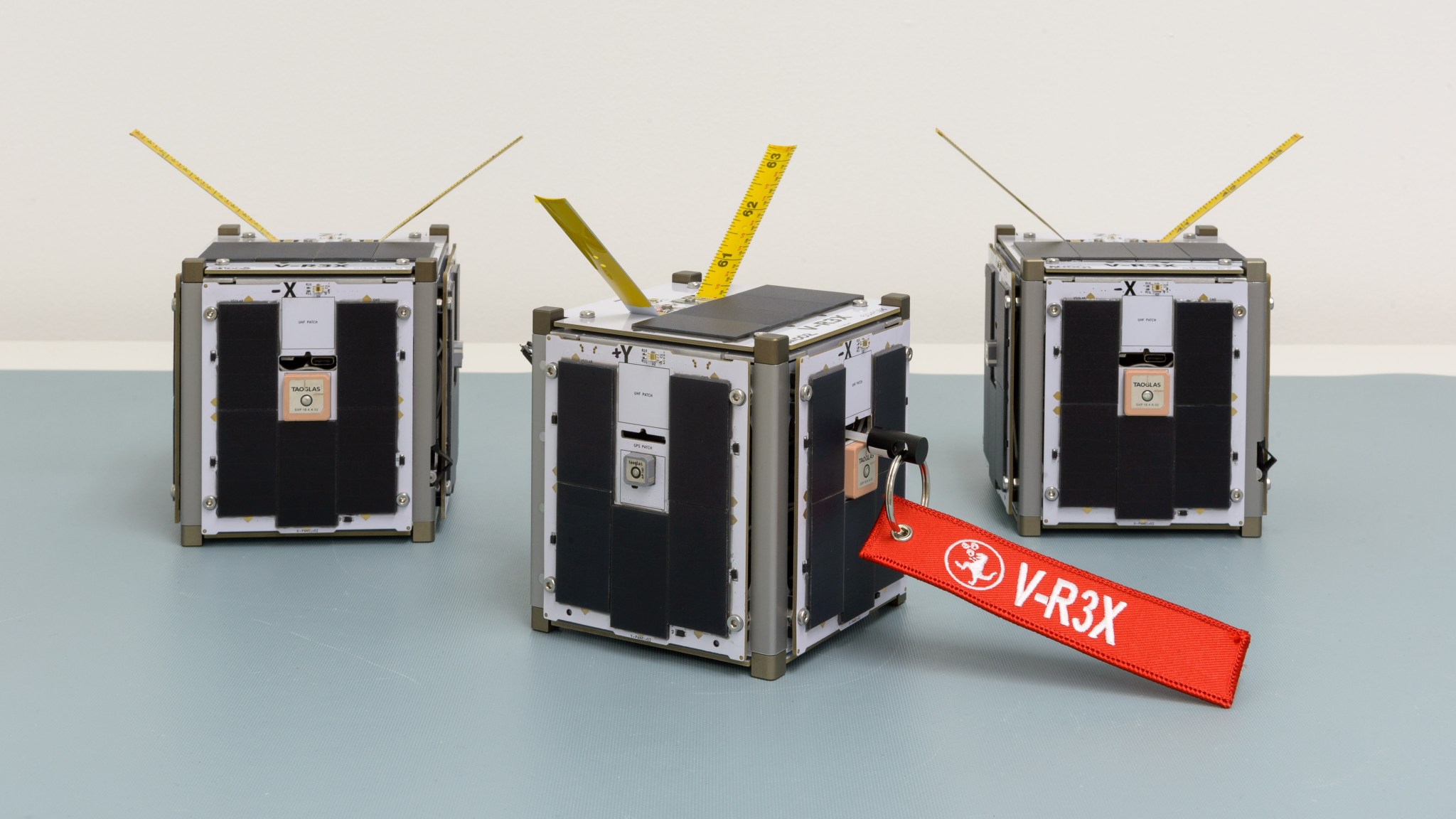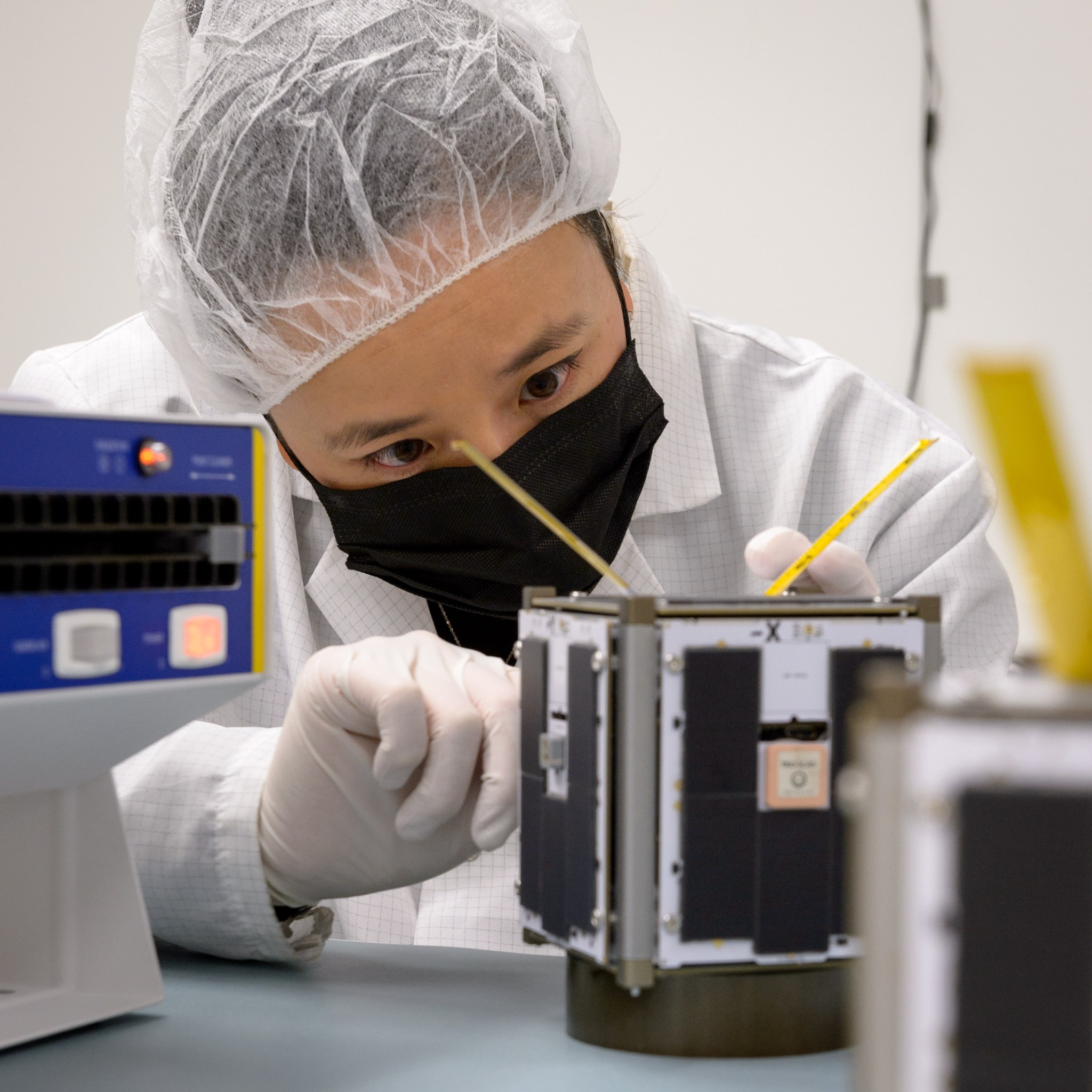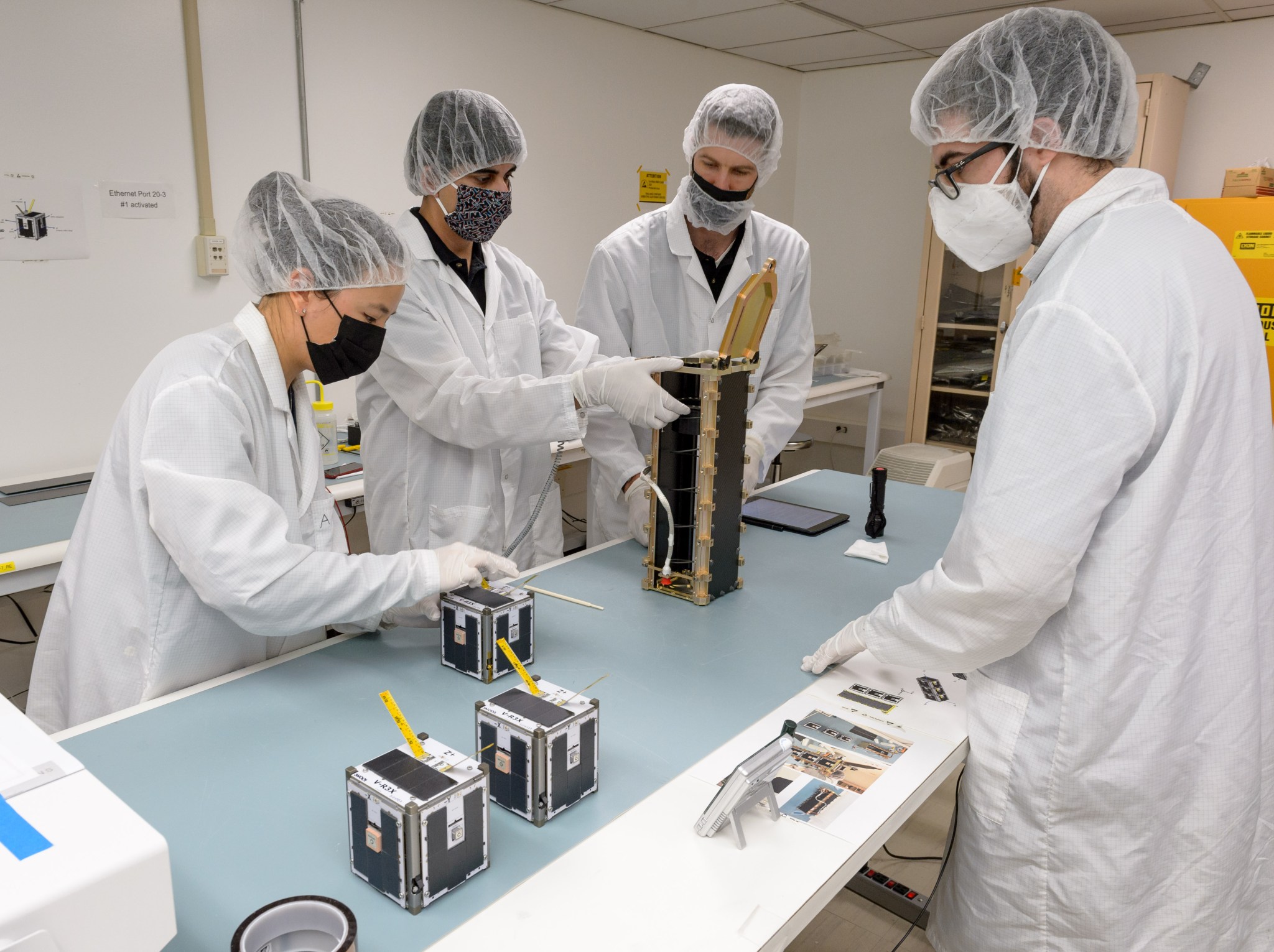
Swarming small satellites to develop the next generation of communication and navigation tech
Learning how to communicate and navigate multiple spacecraft autonomously in space is a technology challenge that will become even more important to solve as NASA continues to operate in low-Earth orbit and beyond. The V-R3x mission uses a swarm of three small satellites to demonstrate new technologies and techniques for radio networking and navigation. By developing and demonstrating these technologies on a small scale, they can be implemented for future multi-spacecraft missions, enabling NASA to pursue its future science, technology, and exploration goals.

Using three satellites known as CubeSats, each about the size of a coffee mug, the mission will conduct a series of such demonstrations. They will prove the ability to take high-precision data on spacecraft distance, send data from one spacecraft to the other at a high data rate, coordinate radiation measurements using onboard sensors, and keep track of the orientation and formation of all three spacecraft.
The first stage of the mission will begin with an orbital mission launching aboard a SpaceX Falcon 9 rocket as a part of the Transporter-1 mission. If all goes according to plan, the mission anticipates completing its primary objectives within two weeks of launch, with a full mission duration of three months to gather additional data.
To complement this launch, the V-R3x team will also launch a CubeSat on a high-altitude balloon in the future. The balloon test is facilitated via NASA’s Flight Opportunities program. Four units will be deployed on the ground, each driven to separate locations. Once turned on, each unit will communicate with the satellite at the upper edges of the atmosphere – over 100,000 feet away.
Both experiments will show the ability for small satellites to be in communication with each other across vast distances, maintain spatial awareness relative to each other, coordinate to collect data, and speedily share that data with each other.

V-R3x is based on an open-source CubeSat framework that integrates hardware and software, known as PyCubed. It will also be making use of the Amazon Web Service’s ground station, the first operational use case for a NASA mission. Going forward, V-R3x provides NASA a simple, low-cost platform for future technology demonstration needs.
Milestones:
- January 2021: V-3Rx will be launching as a secondary payload aboard SpaceX Transporter-1, launching at Cape Canaveral Space Force Station in Florida.
- March 2021: A high-altitude balloon test campaign will be conducted with Raven Aerostar in Baltic, South Dakota, to complement the orbital mission.
Collaborators:
The V-R3x project is a collaboration between the Payload Accelerator for CubeSat Endeavors initiative, or PACE, at NASA’s Ames Research Center in California’s Silicon Valley and the Robotic Exploration Lab, or REx. PACE is a part of the Small Spacecraft Technology program within NASA’s Space Technology Mission Directorate. REx was previously at Stanford University in California and is now based at the Robotics Institute at Carnegie Mellon University in Pittsburgh, Pennsylvania, led by Zac Manchester. The Flight Opportunities program, based at NASA’s Armstrong Flight Research Center in Edwards, California, facilitates rapid demonstration of space technologies through suborbital testing with industry flight providers. V-R3x is based on PyCubed, an open-source small-satellite framework that integrates hardware and software solutions for CubeSat and PocketQube applications, and is developed by Max Holliday at Stanford University.
For researchers:
- NASA Flight Opportunities: V-R3x
- State of the Art of Small Spacecraft Technology 2020
- PyCubed Project Page
For news media:
- Members of the news media interested in covering this topic should reach out to the Ames newsroom.

























